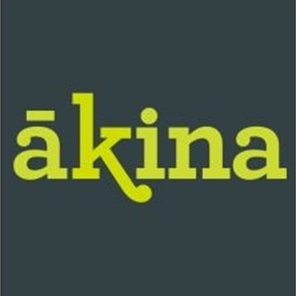RBNZ Remains On Hold
Key points
As widely expected, the RBNZ left the
official cash rate (OCR) unchanged at 5.75% when it released
its quarterly Monetary Policy Statement.
Governor Brash described the current level of the OCR as
‘around neutral’.
The market perceived the
Statement as relatively hawkish, with the RBNZ focusing on
the strength of the domestic economy and upside inflation
risks.
The Bank’s central forecast scenario
includes a modest first re-tightening in early
2002.
However, the door for a further easing in
the near term was left open, with the RBNZ pointing to the
risk of trading partner growth continuing to disappoint.
An alternative scenario printed in the document
showed the global output gap around 0.5ppt wider than in the
central scenario, which would be consistent with the OCR
dropping 75bps below the central track. That would imply
possible further easing steps later this year and/or in
early 2002.
The projected growth profile from
here on has remained largely unchanged: 2½% in 2001/02,
followed by 3% and 2½% respectively during the two
subsequent years.
The RBNZ lowered its
assumption for annual growth of potential output to 2½% and
assessed that the economy is currently operating at around
full capacity. The Bank estimates that, following flat
March quarter GDP, the economy rebounded by 0.8/0.9% qoq in
Q2.
Consistent with buoyant domestic trading
conditions, the RBNZ has revised up its 12 month inflation
outlook by a small amount (see chart below), but expects
medium-term conditions to allow CPI inflation to fall back
to the mid-point of the 0-3% target range.
The
Bank points out, however, that there are upside inflation
risks arising from tight capacity utilisation, particularly
in the labour market.
The assumption for wage
inflation has been revised up by 0.5% for each of the next
three years (to 4%, 3½% and 3% respectively).
Fixed interest markets sold off following the statement.
Bill futures weakened around 10 points, while bond yields
rose around 6 bps. The market is only pricing a 15% chance
of a further easing this year.
The NZD did not
react to the statement.
Our assessment
The
RBNZ’s statement clearly reflected the divergent risks
surrounding the central forecast scenario:
On
the one hand, domestic inflation risks are considerable –
particularly arising from the tight labour market - and the
Bank admitted in its write-up that its inflation projection
could be seen as ‘unduly optimistic’.
On the
other hand, the Bank again demonstrated its concern about
the global growth outlook and the potential effect on New
Zealand, notwithstanding currently buoyant domestic trading
conditions.
The alternative scenario printed in the
Statement shows that it would not take a lot of additional
weakness in global growth to generate conditions, which,
according to the RBNZ, would justify a further reduction in
the OCR. Given the latter, it is surprising that the market
is pricing only a 15% chance of further easing steps later
this year.
While the market has perceived today’s
Monetary Policy Statement to be relatively hawkish, we are
of the view that the RBNZ has retained an easing bias for
the near term. General uncertainty about the global outlook
suggests that it would not take very much to convince the
market to revert to pricing higher probabilities of further
rate cuts. For instance, a string of weak US data or an
unexpectedly ‘dovish’ statement by the Fed next week could
be the trigger. Furthermore, another downward revision to
trading partner growth projections (latest Consensus
forecasts will be released later this week) could move
conditions significantly towards the RBNZ’s alternative
scenario.
While Deutsche Bank’s central view remains
that the RBNZ’s easing cycle is finished and that a first
re-tightening is likely to occur in March, the risk remains
that yields will go lower in the near term.
Ulf
Schoefisch, Chief Economist, New
Zealand


 Stats NZ: Total Greenhouse Gas Emissions Fall 0.7 Percent In The September 2024 Quarter
Stats NZ: Total Greenhouse Gas Emissions Fall 0.7 Percent In The September 2024 Quarter Takapuna Beach Business Association: Takapuna Outpaces Auckland With Strong Economic Growth In 2024
Takapuna Beach Business Association: Takapuna Outpaces Auckland With Strong Economic Growth In 2024 Commerce Commission: Bed, Bath And Beyond Sentenced Over Record Number Of Unsafe Products
Commerce Commission: Bed, Bath And Beyond Sentenced Over Record Number Of Unsafe Products GE Free NZ: Minister Reti Asked For Two Week Delay Of Select Committee Deadline
GE Free NZ: Minister Reti Asked For Two Week Delay Of Select Committee Deadline Science Media Centre: Government Plans To Double Mineral Exports By 2035 – Expert Reaction
Science Media Centre: Government Plans To Double Mineral Exports By 2035 – Expert Reaction University of Canterbury: AI-powered Tool To Combat Rising Wildfire Danger
University of Canterbury: AI-powered Tool To Combat Rising Wildfire Danger



